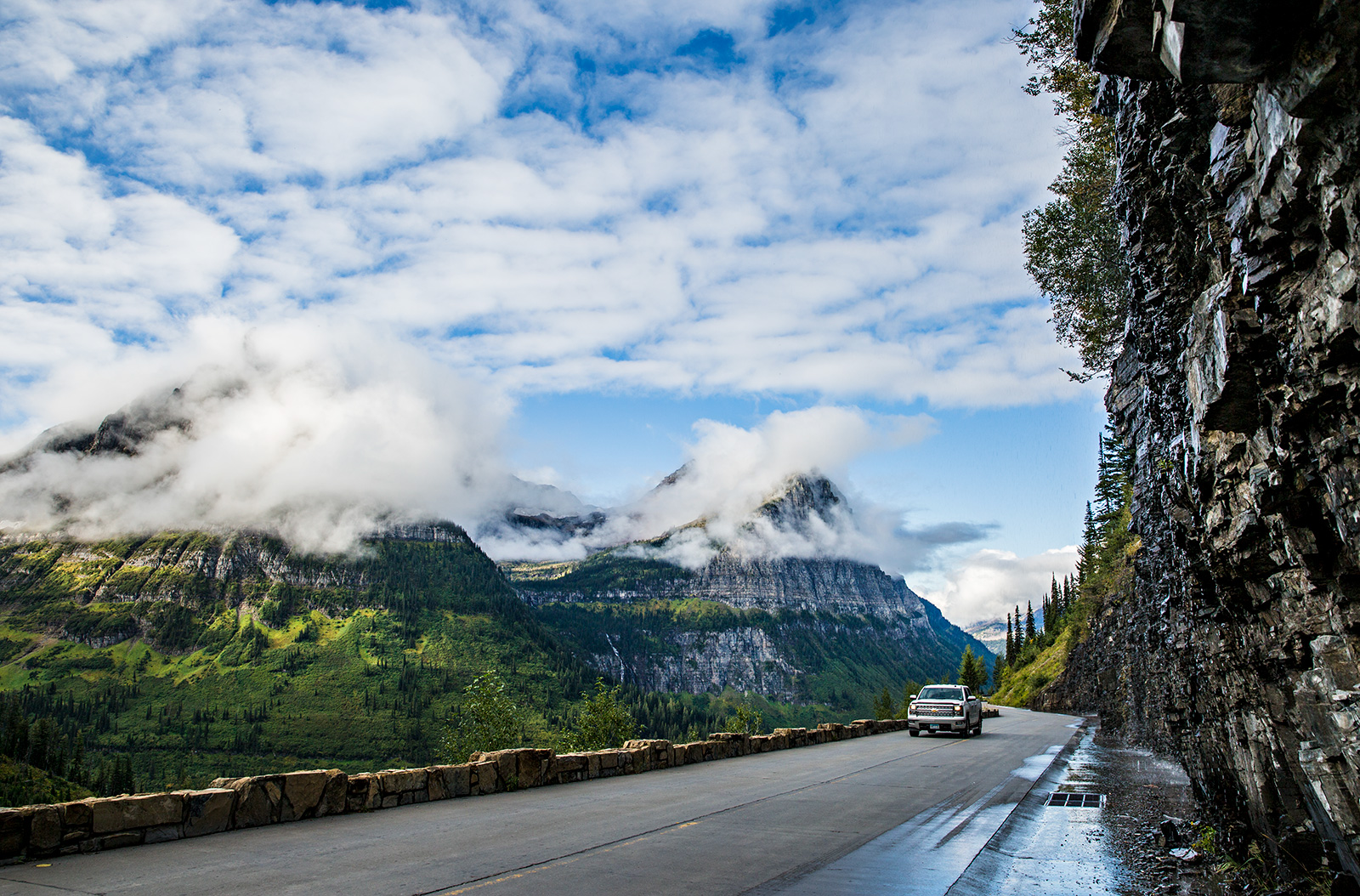
Going-to-the-Sun Road Fully Opens to Vehicles
Park officials announced early Wednesday morning that all 50 miles of the iconic alpine byway are open to motorized traffic, matching the latest opening date on record
Glacier National Park officials on Wednesday morning announced the entire 50-mile length of Going-to-the-Sun-Road is open to motorized traffic between West Glacier and St. Mary, matching the latest opening on record since the famed alpine byway debuted to the public on July 15, 1933.
Until today, vehicles entering the park at the west entrance could only drive as far as Avalanche Creek, while east-side motorists were stopped at Jackson Glacier Overlook; Wednesday’s opening means visitors can traverse the Sun Road’s full route up and over Logan Pass on the Continental Divide, although vehicle reservations are required.
The park-going community along with gateway businesses cheered the long-awaited announcement on social media, even as a dedicated cadre of cyclists bemoaned a shortened window to test their stamina on the full 3,200-foot climb to Logan Pass without the distraction of traffic. Although bikers and hikers have enjoyed partial access to the Sun Road since mid-April, closures related to avalanche danger and road-crew safety, in addition to snow obstacles and plowing work, prohibited access to the thoroughfare’s high point prior to July 9. The narrow window for access to Logan Pass offered intrepid hikers and bikers a scarcity of days with car-free enjoyment; however, according to the fitness-tracking app Strava, at least 224 cyclists made the pilgrimage to the pass over four days.
Park officials and road crews attributed this year’s delayed opening to late-spring snowstorms that significantly slowed down plowing progress. New snow accumulations at higher elevations lead to frequent avalanches and rockslides, occasionally forcing crews to clear sections of road multiple times. On June 13, an unusual late-season atmospheric river slammed into the region, dumping prodigious amounts of rain and snow in the mountains. SNOTELs in nearby mountain ranges recorded 8 to 10 inches of precipitation and 2 to 4 feet of snow in less than 72 hours, with snow levels dropping to 4,500 feet. All told, the storms from early May into mid-June produced 15 to 28 inches of precipitation in the region, and left snowpacks at 180% to 340% of median on June 18.
The Sun Road has only opened after the July Fourth holiday five times in its 90-year-history, including the year it opened and was officially dedicated on July 15, 1933. In 1943, reduced staffing due to World War II led to a July 10 opening, whereas in 2011 an exceptional snowpack and persistent winter weather through June led to a July 13 opening. In 2020, the coronavirus pandemic delayed the road’s opening until July 13, and even then visitors were only allowed to travel from the west entrance to Rising Sun, marking the only year a portion of the Sun Road remained closed for an entire season.
For the second year, access to Glacier Park via Going-to-the-Sun Road is regulated through a ticketing system that requires advance registrations to be purchased, in addition to the standard entrance pass. Visitors must have their reservation in hand to access the Going-to-the-Sun corridor via the West Glacier and Camas entrances and beyond the Rising Sun checkpoint between 6 a.m. and 4 p.m. each day. Vehicle reservations can be purchased at Recreation.gov starting at 8 a.m. each day and are valid the following day.
In addition, reservations are needed to access the Park’s North Fork entrance between 6 a.m. and 6 p.m., though visitors are still able to visit Polebridge just outside the entrance.
Visitors with service reservations along Going-to-the-Sun Road corridor and in the North Fork area of the park do not need a vehicle reservation. Valid service reservations include lodging, camping and commercial tours.
Vehicle reservations are not required to access Many Glacier, Two Medicine, Cut Bank, Walton, Goat Lick, St. Mary or Chief Mountain Highway but a park pass is still required.
The park’s free shuttle service will be operational this year under a first come-first served system. The shuttle will make stops at the Apgar Visitor Center, Sprague Creek Campground, Lake McDonald Lodge Avalanche Creek, The Loop, Logan Pass, Siyeh Bend, Gunsight Pass, St. Mary Falls, Sunrift Gorge, Sun Point, Rising Sun, and the St. Mary Visitor Center. Additional information can be found on the park website.
Due to continuing hazardous snow condition and emerging vegetation, the Highline Trail and Hidden Lake Trail from Logan Pass, Oberlin Climbing Route, and a portion of the Grinnell Trail are still closed. For up-to-date information on trail conditions and clearing activities, visit the park’s trail status webpage.
Important Travel Warnings:
There is a nightly closure (10 p.m. to 6 a.m.) on Going-to-the-Sun Road 1.5 miles north of the West Entrance to Sprague Creek for construction work. During the day a traffic light will regulate single-land traffic through the construction area. At night visitors will have one opportunity at midnight to be led through the area via pilot car.
Construction crews are also installing a new vault toilet at Big Bend that is scheduled to be complete by the end of July. Until construction is complete, Big Bend will have less parking available. Visitors need to be on the lookout for work zones, slow down, and give the construction workers a wide berth.
There are no fueling stations within Glacier’s boundaries.
Parking is limited. During summer, parking lots often fill by early morning.
During extreme congestion, access to whole areas may be temporarily restricted to allow for emergency vehicles.
Glacier’s entries and roads all have specific restrictions and season lengths. Please plan accordingly.
The Chief Mountain Border Crossing remains closed.